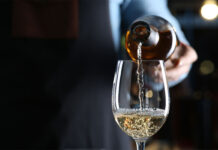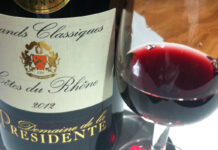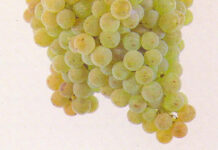Luke Richardson is a sommelier who has worked in a range of venues across the UK in a career spanning more than 20 years. In his column for SLTN he shares his thoughts on all things wine-related and answers your questions about wine. If you have a question for Luke email it to sltn@peeblesmedia.com

Hello again.
This time around I thought I would talk a little on serving wines – the dos and the don’ts, so to speak.
The way that wine is served in your venues suggests a fair amount about how important wine is to your business, and can help make a statement about the business overall.
Firstly, temperature. Temperature is hugely important to wine – it affects the aromas, the texture and the flavour. To keep it simple, I’ll list wine styles here and their corresponding desired temperatures. Obviously, not everyone will have the luxury of a multi-temperature wine fridge, so I’ll then talk about ways to help get as near as possible. There is the eternal caveat here that the customer is always right, insomuch that they can drink their wine at any temperature they choose; these guidelines are for the optimum presentation of your products.
• Sparkling wines and non-vintage Champagne: essentially serve as cold as possible, in an ice bucket if possible; ideal temperature 4-6°C and served in a flute.
• Vintage Champagne: a little warmer and in a glass with a wider aperture, often better in a wine glass than a flute.
• Light, crisp, high acid white wines and rosé wines (Sauvignon Blanc, Pinot Grigio, Riesling, unoaked Chardonnay and all rosé): ideally 6-8°C and best in a thin, tulip-shaped wine glass (Bordeaux style).
• Full-bodied or oaky white wines (Oaked Chardonnay, Viognier): 10-12°C, and served in a more generous, rounder glass (Burgundy-style balloon ideally).
• Light-bodied red wines (Pinot Noir, Gamay, unoaked Nebbiolo): 12-14°C, served in a Burgundy-style glass.
• Medium-bodied red wines (Cotes du Rhone, Barbera, New World Merlot, simple – unoaked – Shiraz): 16°C and in either a Bordeaux-style or a Burgundy-style glass.
• Full-bodied reds (Malbec, Bordeaux blends, Cabernet Sauvignon, Zinfandel): 18°C, served in a tulip-shaped glass, Bordeaux-style.
• Dessert wines: slightly trickier. The higher the acidity, like Jurançon, the colder you serve – best on ice. As you get to the richer (ie. less acidic, sweet wines) like Sauternes, a little warmer. So from 6-12°C.
As mentioned, not everyone has a multi-temperature wine fridge but there are a few things that can be done to make a little difference.
Firstly, wine ‘coolers’. These keep the wine at as near the temperature that they are first served at, mainly by protecting the wine from the room temperature. Never put ice in the bottom of these, it raises the bottle up so that less of it is protected, and essentially only chills the very bottom of the bottle. Do store them in a fridge or in the coldest place you have available if you can.
Ice buckets are great too, but often served incorrectly. There should be a couple of scoops of ice in there, and then water up to around the 2/3 mark. It is the ice that cools the water, but it is the water that cools the wine. This saves on your ice and chills the bottle far quicker than just ice alone. Nice touch to supply a cloth to wipe the bottle on if you can.
























